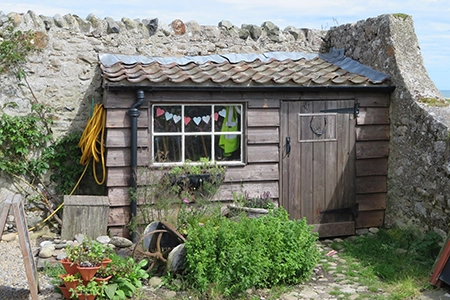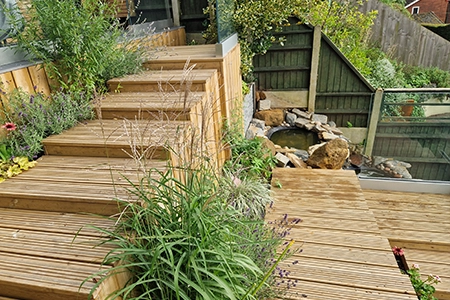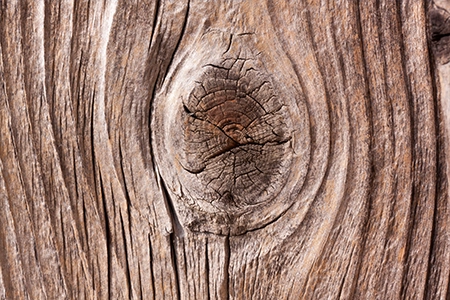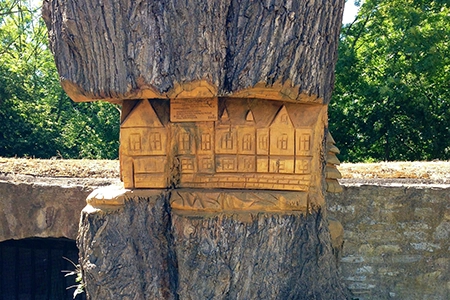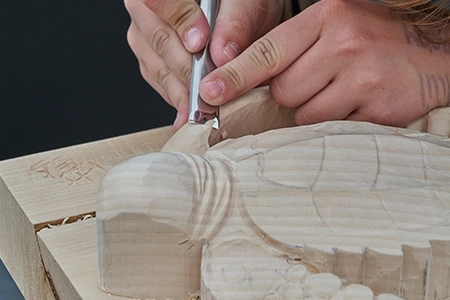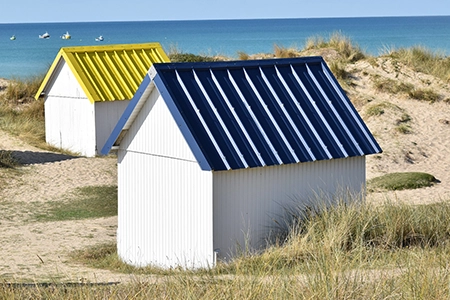Introduction
Embarking on the journey of building a garden shed is not just a practical endeavour but an aesthetic one. Selecting the right wood for your shed is crucial, influencing not only its durability but also its visual appeal. In this exploration of wood wonders, we navigate the importance of making informed choices, delve into various types of commonly used woods, uncover the decorative aspects of wood in shed building, and unravel the historical roots that have made wood a staple in garden structures.
Choosing the Best Wood for a Garden Shed
Choosing the best wood for a garden shed is a decision that goes beyond mere aesthetics. It is a critical consideration that directly impacts the structure’s longevity and its ability to withstand the rigours of the outdoor environment. The durability, resistance to decay, and overall aesthetic qualities of different woods play pivotal roles in determining the shed’s performance and appearance.
Shed builders, armed with a comprehensive understanding of these factors, can make informed decisions that not only align with their design preferences but also cater to the practical needs of a shed, ensuring it stands resilient against the test of time and nature’s elements.
Types of Wood for Garden Sheds
Each type of wood brings its own set of characteristics, offering a unique blend of advantages and considerations. In this section, we delve into the diverse world of wood options for garden sheds, providing insights into five commonly used types. From the aromatic allure of cedar to the sturdy elegance of oak, understanding these woods’ traits will empower you to make an informed choice, ensuring your shed not only stands the test of time but also adds visual charm to your outdoor haven.
Cedar
Cedar stands out as a lightweight wood with an appealing aromatic quality and a distinctive natural reddish-brown hue. A significant advantage of cedar is its inherent resistance to decay and insects, making it an excellent choice for outdoor structures due to its durability. However, it’s important to note that cedar can be relatively expensive. The solution lies in considering the long-term benefits it offers, coupled with minimal maintenance requirements, which can offset its initial cost
Redwood
Renowned for its rich reddish-brown colour and straight grain, redwood is an aesthetically striking wood with excellent resistance to decay and insects, which makes it a contender for the best wood for a garden shed. Similar to cedar, redwood can be on the higher end of the price spectrum. The solution here is to recognise its longevity and the appealing aesthetics it brings to your garden shed, making the investment worthwhile.
Pine
Pine is a light-coloured softwood with a straight grain, making it a cost-effective and readily available option. However, it is prone to decay and insect infestation without proper treatment. To address this, regular treatment or sealing of the wood is necessary to enhance its durability and ensure a longer lifespan for your shed.
Douglas Fir
Known for its light colour and pronounced grain pattern, Douglas fir is a strong and sturdy softwood, providing excellent structural support, which is why it should be right up there when you decide what is the best wood for a garden shed. However, it is prone to splitting. To counter this disadvantage, pre-drilling holes for fasteners can prevent splitting and ensure a more stable construction.
Pressure-Treated Wood
Typically Southern Yellow Pine treated with preservatives, pressure-treated wood offers enhanced resistance to decay, insects, and moisture. Nevertheless, it comes with an initial chemical odour and a greenish tint. The solution is to allow time for the wood to dry and the colour to mellow, ensuring a more visually appealing result.
Is Oak the Best Wood for a Garden Shed?
Oak, a dense and sturdy hardwood with a distinctive grain pattern, comes in varying colours from light tan to rich reddish-brown. Its exceptional strength and durability make it a long-lasting choice for outdoor structures, though it tends to be heavier and more expensive than softwoods. Embracing oak’s robust qualities for applications where strength is crucial is advised, and appreciating its timeless aesthetic can justify the initial investment. This is why it is one of the most commonly used and a serious contender in the race to decide which is the best wood for a garden shed.
There are two common types of oak that are available to the general public, wet-oak (also known as green oak) and kiln-dry oak. Each of these types of oak have different qualities, benefits and drawbacks when using such for a garden structure such as a shed. To read more on whether either of these may be suitable and the best wood to use for a garden shed, check out our blog that explores the differences and similarities between the two!
Decorative Aspects of Wood in Shed Building
The decorative aspect of wood in shed building goes beyond practicality, turning garden structures into works of art that seamlessly blend with natural surroundings. Wood’s versatility allows builders to explore intricate detailing, custom finishes, and architectural elements, showcasing craftsmanship and elevating aesthetic appeal.
Intricate carvings, ornate trimmings, and carefully crafted doors and windows highlight the artistry of woodworkers, transforming a simple shed into a visual masterpiece. The variety of wood species provides a broad palette for customisation, allowing builders to choose the perfect wood type that complements the garden’s design. Custom finishes, such as stains or paints, not only protect the wood but also contribute to a unique appearance, creating a focal point within the garden.
Architectural elements like dormer windows or decorative brackets add elegance, turning a utilitarian structure into a captivating feature. Wood’s warmth and natural beauty create cohesion with the outdoor space, making a well-designed wooden shed an extension of the garden, blending seamlessly with surroundings. The decorative aspect of wood allows for customisation beyond functionality, transforming a shed into an inviting space that combines utility with admiration.
The decorative side of woodworking and carpentry can often be forgotten about, especially in relation to garden structures. When people see sheds they don’t often think of an art piece but choosing the best wood for a garden shed can turn this preconception on its head.
History of Woodworking in Garden Structures
The history of woodworking in garden structures traces its roots back to ancient civilisations, where craftsmanship and the use of wood became integral to creating functional and aesthetically pleasing outdoor spaces. Throughout the ages, wood has maintained its status as a preferred material for building sheds, gazebos, and various garden structures, showcasing its timeless appeal and enduring popularity.
In ancient cultures, skilled artisans crafted wooden garden structures that served both practical and decorative purposes. From the intricate wooden lattices of Persian gardens to the elegant pergolas of ancient Rome, woodworking became a symbol of craftsmanship, blending artistry with utility.
During the Renaissance, woodworking in garden structures experienced a revival, with elaborate wooden designs adorning European gardens. The use of wood in creating arbours, trellises, and decorative fencing reflected the era’s emphasis on aesthetics and the integration of outdoor spaces into daily life.
As centuries progressed, woodworking techniques evolved, influenced by cultural shifts and advancements in technology. The Industrial Revolution brought about mass production, making wood more accessible while retaining its natural charm. This accessibility allowed garden structures to become commonplace in both grand estates and modest backyard gardens.
In contemporary times, the art of woodworking in garden structures continues to thrive. Modern craftsmen and woodworkers draw inspiration from historical designs while incorporating innovative techniques and sustainable practices. The enduring legacy of wood as a material for garden structures lies in its ability to effortlessly blend functionality with aesthetics, creating outdoor spaces that stand as testaments to the timeless beauty of woodworking savvy. As practitioners of this craft we are experts in choosing the best wood for a garden shed.
Considerations when Choosing the Best Wood for a Garden Shed
Choosing the right wood for your garden shed involves thoughtful consideration of factors influencing its performance and appearance. Define the shed’s purpose—be it storage, a workshop, or a garden focal point—to guide your selection. Local climate conditions are crucial; factor in temperature, humidity, and precipitation to ensure the wood’s durability.
Varying maintenance needs exist among wood species; some require regular care, while naturally resistant types like cedar and redwood demand less attention. Personal preferences matter, too, considering colour, grain, and aesthetics that harmonise with your garden. By understanding these factors, you can make an informed decision that aligns with functionality, climate, maintenance, and design, ensuring your garden shed is both durable and visually appealing.
NGS Expertise
In the realm of garden structures, the choice of wood holds paramount importance, and at NGS, we recognise the nuances that contribute to the selection process. Our team comprises seasoned woodworkers and carpenters, bringing a wealth of expertise to the crafting of bespoke garden structures. To find out more, get in touch via our Contact Us page!
Whether your preference leans towards the natural allure of cedar or the enhanced durability of pressure-treated wood, we offer personalised guidance to translate your vision into a tangible reality. With meticulous attention to detail and a commitment to quality, by helping you choose the best wood for a garden shed we ensure that your chosen wood not only meets functional requirements but also reflects your unique style. Furthermore, this creates a garden shed that stands as a testament to both craftsmanship and individuality.
We also have a blog that has been especially written to show you, the reader, how to make a statement in your garden with bespoke wooden features. Whether you’re interested in a learning more on this subject or looking for inspiration, this article is worth the read!
Conclusion
Delving into the world of garden sheds transforms the quest for the best wood into a multi-faceted exploration, encompassing structural integrity, aesthetics, history, and personal style. Beyond the functional aspects, the choice of wood becomes a canvas for artistic expression, weaving together the threads of craftsmanship and the timeless beauty inherent in nature.
Selecting the right wood is not merely a practical decision; it’s an opportunity to curate a garden structure that harmonises with the surroundings, leaving an enduring mark that reflects both individuality and an appreciation for the rich history of woodworking in outdoor spaces. At NGS, we understand this intricate interplay, and our team is dedicated to guiding you through this journey, ensuring that your garden shed becomes a seamless blend of form, function, and aesthetic allure.

